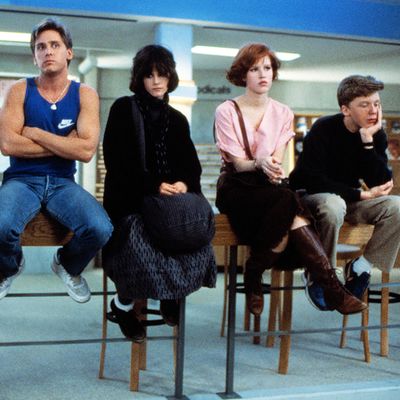
Although we don’t talk much about antiquated psychological concepts like the id, ego, superego, and unconscious anymore, we do know that there are plenty of actions we take without thinking—feelings that seem to bubble up from nowhere and ways that we react to life that just seem to be part of our “personality.” Today, we understand that all of these automatic behaviors, feelings, and thoughts are related to specific activity in our brains. Recent research suggests that, in a very literal sense, our brains were built on a foundation of popularity.
Try testing yourself. What’s easier to remember, the name of your ninth-grade social studies teacher or the prom king and queen in your high school? If you’re like most people, you probably have far richer memories of the popular kids in your school than anything else in adolescence. You can probably even recall the feelings you had about the cool kids—and maybe even relive some of those feelings all over again as you remember them. It’s not just a matter of nostalgia—it’s as if those teenage experiences seem far more recent than they actually are, and far more salient and impactful today than they should be.
It’s during adolescence—or at the start of puberty, to be more precise—that our brains develop more dramatically than at any other point in our lives after the age of one, evolving from the way that children think (spontaneously, in the moment, and without self-consciousness) to the way adults do (more ruminative, autobiographical, and attuned to others’ perceptions of us). The experiences we have in those critical years have the potential to affect the brain we will live with for the rest of our lives, which gives our teenage experiences with popularity such immense power.
Adolescent memories can affect us in many powerful ways— specifically by creating biases in what we see, what we think, and what we do.
Psychologists refer to these as several of the steps of “social information processing,” which is a complex way of saying that if we were to review any social interaction in our lives in super–slow motion, we would discover that the thousands of reactions involved in it are actually the result of a series of discrete automatic decisions. We don’t experience these as discrete steps, of course, but rather as instinctive behavior, because this all takes place in literally a fraction of a millisecond.
For instance, I recently ran an errand at the grocery store, and as I entered, a large man was hurrying out. As he passed by me, our shoulders bumped, and I was nudged a bit to the side. I instantaneously said, “Oops, sorry.” That was an automatic reaction.
This kind of trivial incident happens so often that we never bother to think about it. But this time I asked myself: why did I apologize? The slight collision wasn’t my fault, so my response seemed a bit foolish. A split second later, I saw another customer being brushed aside by the same man in the same way. His automatic reaction was different, shouting something that isn’t fit to print.
Neither one of us planned our responses to getting pushed—they just happened. The millisecond decisions we make in such reactions reveal some form of bias that can be traced back to our past. Individually, each of them may not always have significant consequences. But collectively, they define who we are and how our lives unfold.
Psychological science has now demonstrated exactly how these biases are shaped by our memories. In many ways, this process can be quite useful. It helps us efficiently scan all of the social information we confront, make decisions about how to respond, and execute satisfactory behaviors that maintain our survival. After all, we can’t stop and seriously reflect on every single social interaction we have in a day. Our sophisticated and efficient adult brains simply rely on whatever has worked for us before. Someone walks by and says hello? Nodding back seemed to be successful previously, so we do so again. Someone bumps into you? Being polite, getting out of the way, and avoiding conflict has always proven to be the path of least resistance, so we’ll go with that.
But remember: these biases are all skewed toward initial formative memories from our adolescence. Our adult brains began to form to help us survive in the hallways of high school. The problem is, we left high school long ago—and our brains never got the memo. This is probably why, every once in a while, something atypical happens, whether a miscommunication, a mental hiccup, or an embarrassing moment. It’s in moments like these when our background biases get thrust to the fore and exposed, and the legacy of our experiences with adolescent popularity makes itself known.
From POPULAR: The Power of Likability in a Status-Obsessed World by Mitch Prinstein, published on June 6, 2017 by Viking, an imprint of Penguin Publishing Group, a division of Penguin Random House, LLC. Copyright © 2017 by Mitch Prinstein.




